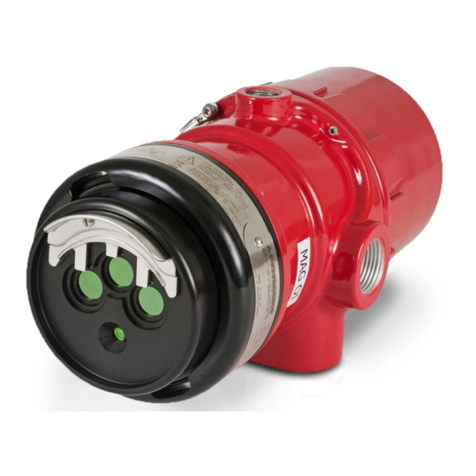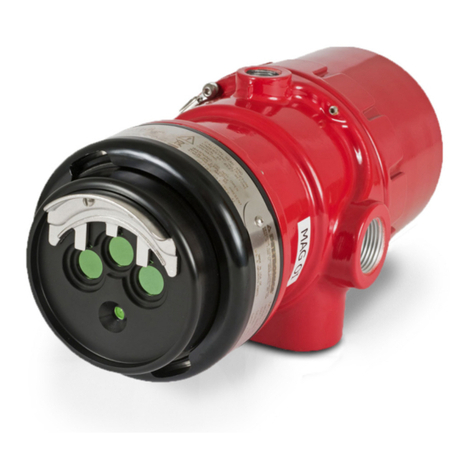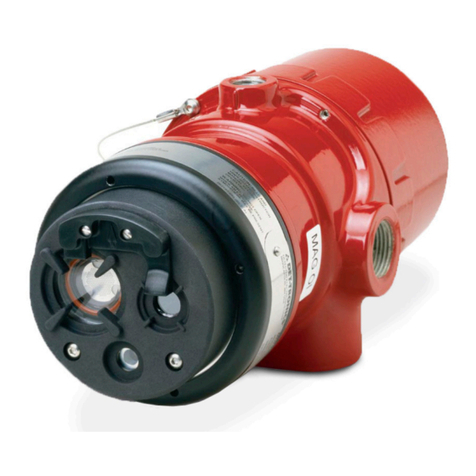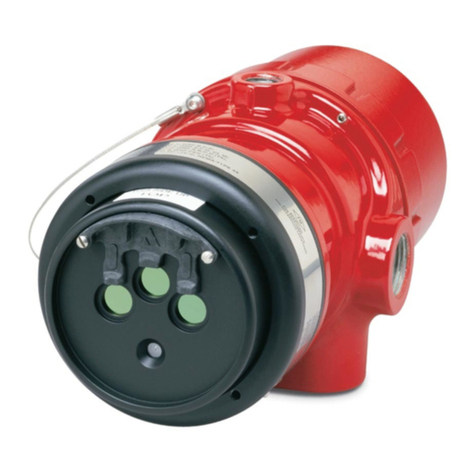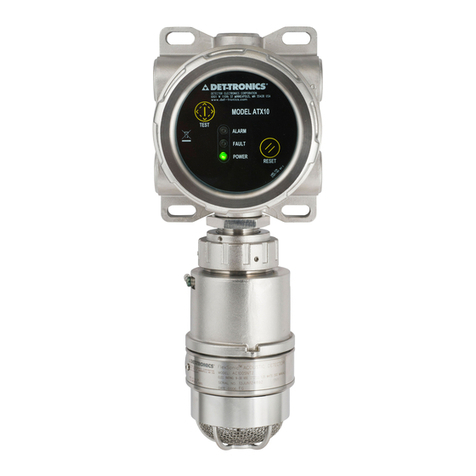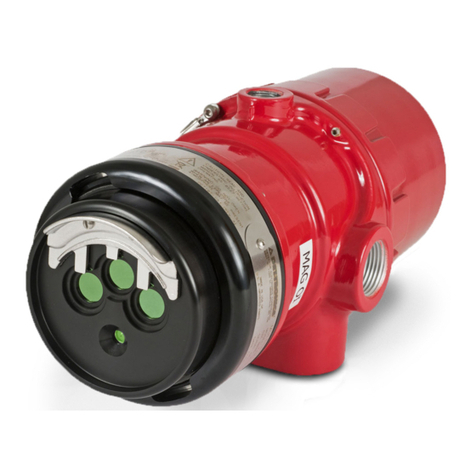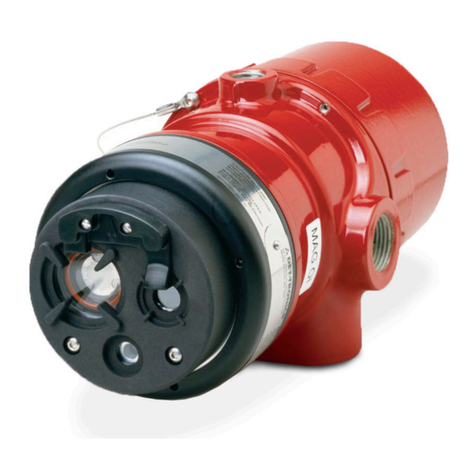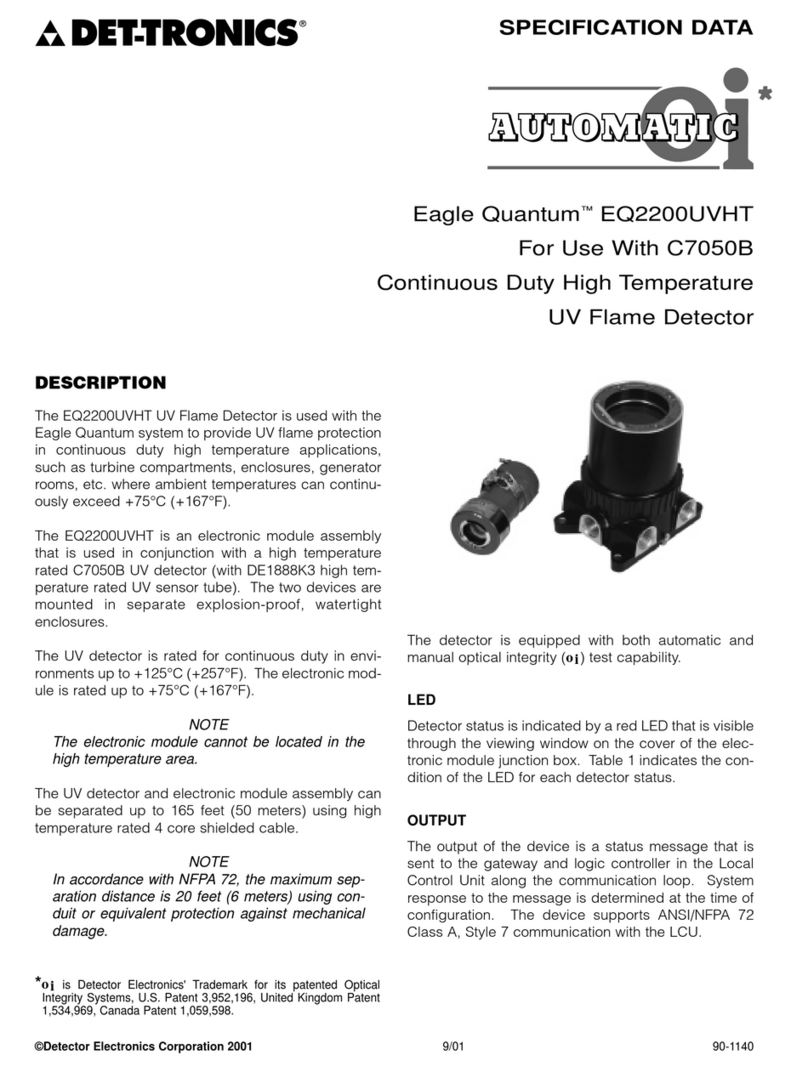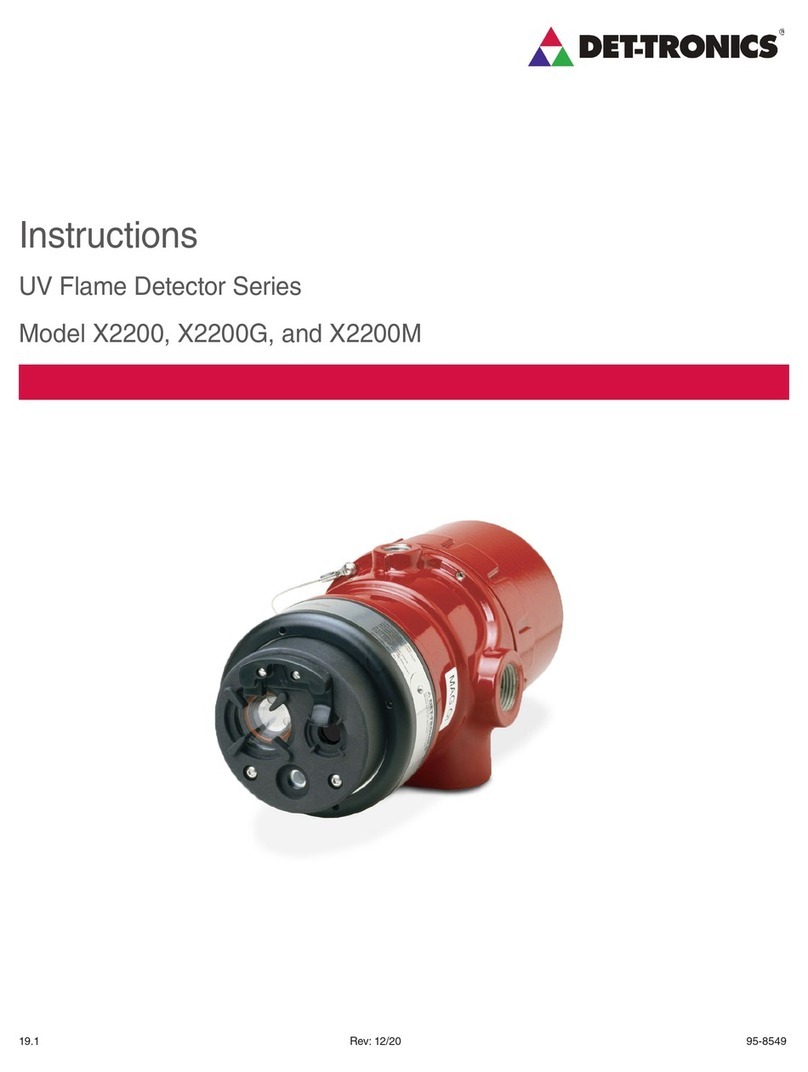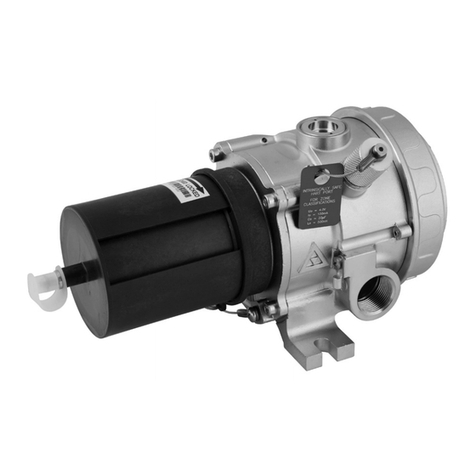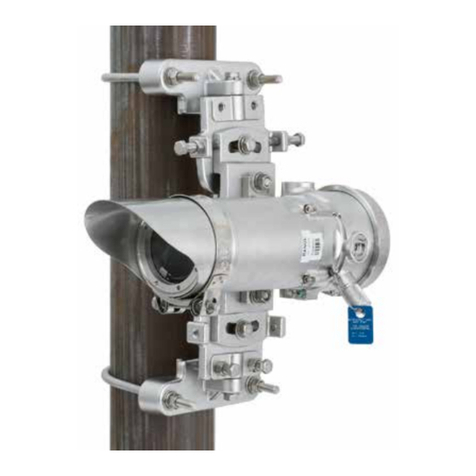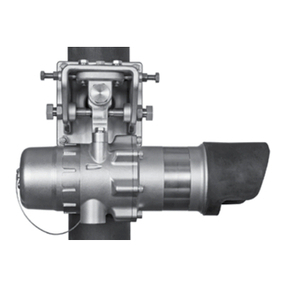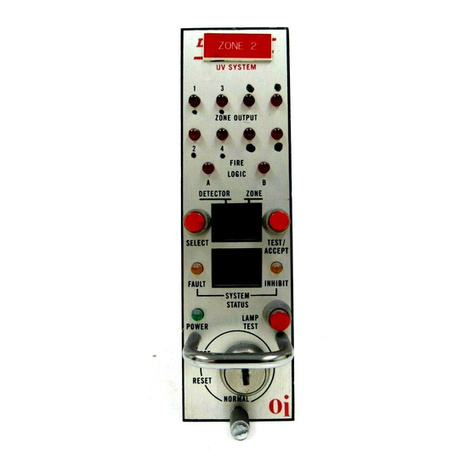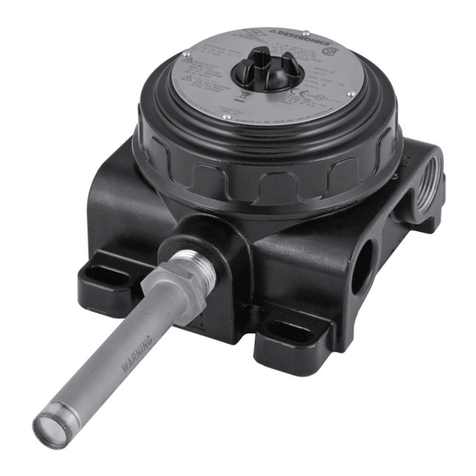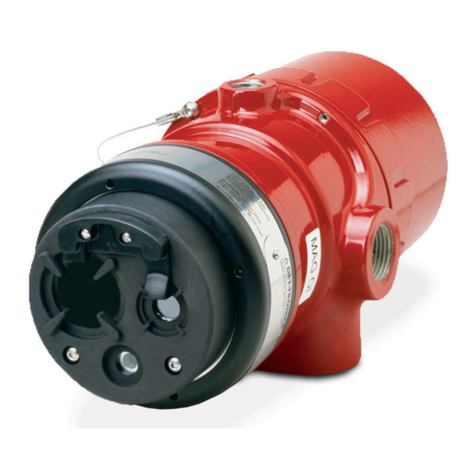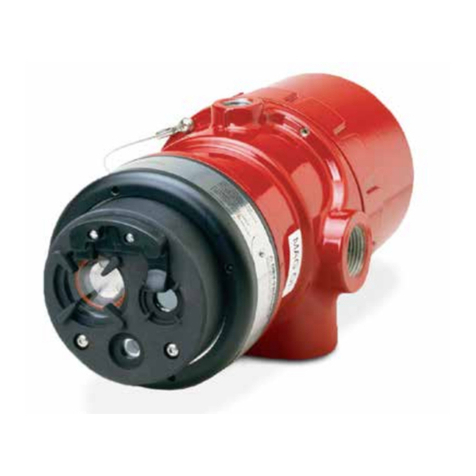2
The arc rejection algorithm examines the radiant ener-
gy level detected within a specified unit of time (timed
gate). The output of the detector is determined by
three variables:
— sensitivity level
— gate length
— number of consecutive gates required.
Different combinations of these variables allow for
various levels of arc rejection capability. Four arc
rejection levels are selectable for each detector
through a PC running Det-Tronics sortware.
The proper arc rejection setting for a given applica-
tion must be determined through testing. For indoor
applications with known electrostatic energy fields
within 15 feet of the detector, an arc rejection setting
of “very high” or “high” is typical. For outdoor appli-
cations, “medium” or “low” arc rejection settings are
typical.
Sensitivity
Whether the Standard or Arc Rejection mode is
selected, the sensitivity setting must always be pro-
grammed. The selected sensitivity level determines
the fire alarm setpoint. The higher the sensitivity level,
the greater the detection range, but the possibility of
false alarms will be increased. Four sensitivity levels
are selectable through the PC.
The sensitivity setting must be appropriate for the
anticipated fire size at the required distance from the
detector.
Time Delay
Arc rejection mode — If the fire signal meets the
programmed arc rejection requirements, the time
delay begins. A fire output is generated if the fire sig-
nal continues for the duration of the time delay.
Standard mode — A fire output is generated only if
the fire signal exceeds the sensitivity setting for the
entire duration of the programmed time delay.
Automatic or Manual oi
The patented Optical Integrity (oi) system uses an
internally generated UV test signal to determine the
relative condition of the detector and its optical sur-
faces.
If automatic oitesting is selected, the oitest is auto-
matically performed once every minute. The automat-
ic oitest does not generate an alarm output or inter-
fere with normal detector operation.
The manual oitest is initiated using a button on the
point display screen at the PC. The manual oitest
can be used in addition to automatic oito verify cor-
rect system operation.
ALARM LOG
Each detector maintains an alarm log in non-volatile
memory. The time and date are logged for the last 8
alarms.
TERMINAL WIRING BOARD
All external wiring is connected to screw terminal con-
nectors on the terminal wiring board located inside
the detector housing (refer to the “Installation” section
for details).
FEATURES
• Programmable for arc rejection or standard signal
processing method.
• Long detection range to gasoline fires.
• Microprocessor based circuitry.
• Selectable automatic or manual oi.
• Adjustable sensitivity and time delay for fire output.
• Selectable latching or non-latching for fire and fault
outputs.
• Easily visible LEDs indicate normal operation, fire
and fault conditions.
• Operates under adverse weather conditions and in
dirty environments.
• Field addressable.
• Fault isolation.
• Pass through communication circuitry on power
loss.
• No calibration required.
• Non-volatile memory for configuration and logging
of alarms.
• Optional swivel mounting bracket for ease of instal-
lation and positioning.
• Screw terminal connectors.
• EMI hardened.
• FMR, CSA, CENELEC and CE Mark Certifications.
• FMR performance verified per ANSI/NFPA 72 and
FM 3260.
